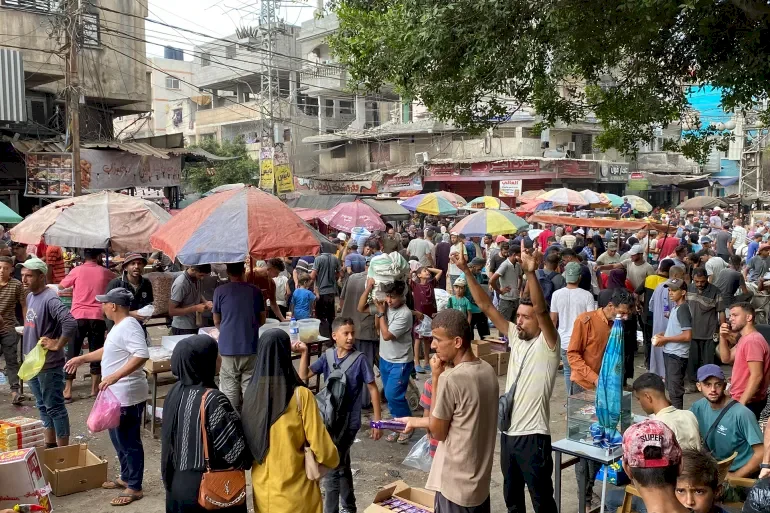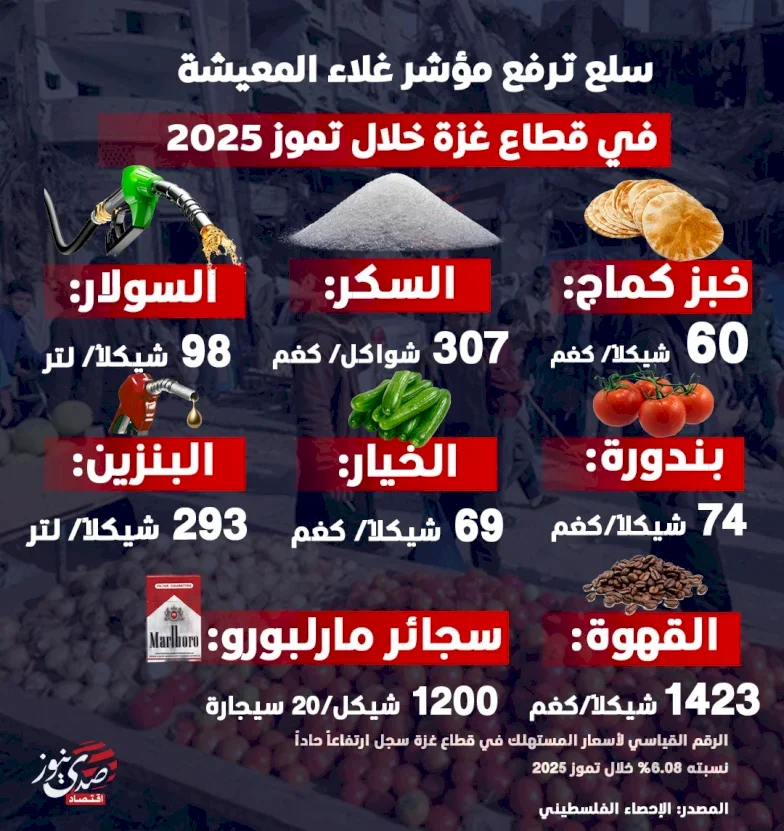
Electronic Payment Reduces the Commission of Liquidity Traders in Gaza
Sada Economy - When you stroll through the markets of the Gaza Strip these days, you hear no more than the question "Do you have sales on the app?" from shoppers, amid a severe cash liquidity crisis that the besieged sector has suffered since the Israeli aggression on October 7, 2023.
Gazans, exhausted by hunger, are looking for outlets that allow purchases using electronic payment through banking applications on mobile phones to bypass the cash liquidity crisis, which has tempted traders to engage in usury and charge exorbitant rates for cash withdrawal.
This crisis emerged in the first weeks of the war, with the occupation preventing cash liquidity from entering the banks and markets of the sector, spiraling into a more dangerous situation that affects the daily life details of about 2.3 million Palestinians due to the tightening of the occupation's siege, closure of crossings, and prevention of humanitarian aid and various goods on March 2.
The Banking Application
In a newly established market on Al-Nasr Street in Gaza City, a seller stood on a metal table promoting the sale of cooking oil and rice packaging through payment via the banking application.
The seller was calling out to passersby and market wanderers, "Keep cash in your pocket and come pay on the app," which is an effective promotional method to attract customers in Gaza's markets during this period, considering that cash liquidity is scarce, and prices are inflated and exorbitant.
Merchants and sellers increase the prices of the goods and merchandise they offer for sale via the banking application by an additional rate ranging from 10% to 30%, and despite this, it has gained popularity and demand as this rate is lower than resorting to what Gazans call "commission traders" to obtain cash for purchases.
Data published by the Palestinian Statistics Center on the prices of the most essential goods needed by families in Gaza:

These unprecedented prices extend to various types of goods and merchandise.
An Economic War
Economic expert Ahmad Abu Qamer states, "It is an economic war alongside the military war," placing it within the context of the occupation's plan for displacement, which cannot be achieved amidst economic stability. Thus, the occupation seeks to create multiple intertwined crises to tighten the economic grip on the population through liquidity issues, starvation, and ensuring the prevention of humanitarian supplies and goods.
According to the economic expert, in addition to imposing strict restrictions on the entry of cash liquidity into the sector, the occupation employs a limited number of traders in Gaza who operate under direct orders from it to achieve its plan. This includes withdrawing denominations of the shekel from circulation to dry up liquidity in the markets. The crisis has escalated with the destruction of trust in the 10-shekel coin denomination, leading to a rejection of trading with it, which has completely disappeared for several months, and a reduction in transactions for the 20-shekel paper note, along with restrictions on the trading of other worn paper denominations that do not have a replacement.
Abu Qamer estimates that this has led to about 40% of the available cash liquidity in the sector being rendered non-functional, providing an opportunity for liquidity traders to raise the "commission rate" in exchange for cashing salaries or remittances that come as aid from individuals or organizations.
The percentage of obtaining liquidity reached more than 50% before declining in recent days to about 37%, following the occupation's allowance for aid and goods to enter, albeit in limited quantities, to alleviate the international pressures raised by the scenes of acute starvation.
Abu Qamer states that the entry of aid and the occupation's allowance for Gazan traders to pay for goods electronically contributed to the increased commercial trading using the banking application, leading to a reduced need for liquidity traders and consequently a decrease in commission rates.
Benefits and Obstacles
Before the outbreak of the war, electronic payment was rare in Gaza, but it has now become, according to Abu Qamer, "a compulsory option." He states that the occupation has achieved two important goals in its economic war. After exhausting the pockets and savings of citizens with the liquidity crisis and rising prices, it currently allows traders to utilize electronic payment not to alleviate but within the context of a "financial siege," enabling it to impose strict oversight on financial movements in the sector, no matter how large or small, and cut off any money from reaching resistance factions.
Beyond the occupation's intentions, the economic expert considers commercial transactions using electronic payment to be a positive matter, alleviating the severity of the liquidity crisis and helping reduce prices, especially if the flow of commercial goods to the markets continues and traders accept payment through banking applications.
- However, there are obstacles and challenges facing the broader shift towards this mechanism, which Abu Qamer summarizes as:
- Lack of suitable infrastructure that includes awareness and financial culture, which is extremely limited.
- Unavailability of the Internet and electricity in many areas of the devastated sector.
- Incompatibility of this mechanism with vital services like transportation.
Economic and social affairs specialist Rami Al-Zayegh agrees with Abu Qamer that electronic payment is one of the important, practical solutions to overcoming the scarcity of cash liquidity, as well as related issues concerning the deterioration of paper currency and the refusal of vendors and merchants to trade with it.
Al-Zayegh states that the destruction of banks in the sector by the occupation, the cessation of operations of other branches due to the siege, and the occupation's prevention of cash entry alongside electricity and Internet crises represent obstacles hindering the wider spread of the culture of commercial dealings through banking applications.
The Palestinian Monetary Authority (acting as the central bank) can play an important role in addressing the cash liquidity crisis, as it is the regulatory framework for monetary policies, by performing its duties according to Palestinian law and working to encourage electronic payment through cooperation with relevant authorities, such as municipalities and commercial chambers, to organize the monetary and financial process in the sector, facilitating the opening of accounts or banking wallets, speeding up financial inclusion for citizens, and easing restrictions on monetary procedures and operations in the sector, according to Al-Zayegh.
Source: Sada Economy + Al-Jazeera

The Palestinian Economy at a Crossroads: 4 Files Awaiting Resolution

The Ministry of National Economy Announces the Opening of Olive Oil Import Applications

Beit Jala Pharmaceutical Industries Acquires 79% of Total Trading Value for Today’s Sessio...

The European Union Supports Sustainable Transformation in the Fashion and Textile Industry...

Israel Delays $35 Billion Gas Deal with Egypt... Qatar Offers Alternatives

515 Million Shekels Stuck... The Arab Workers' Union Demands Rights for Palestinian Worker...

Currency Exchange Rates Against the Shekel on Tuesday (December 2)
